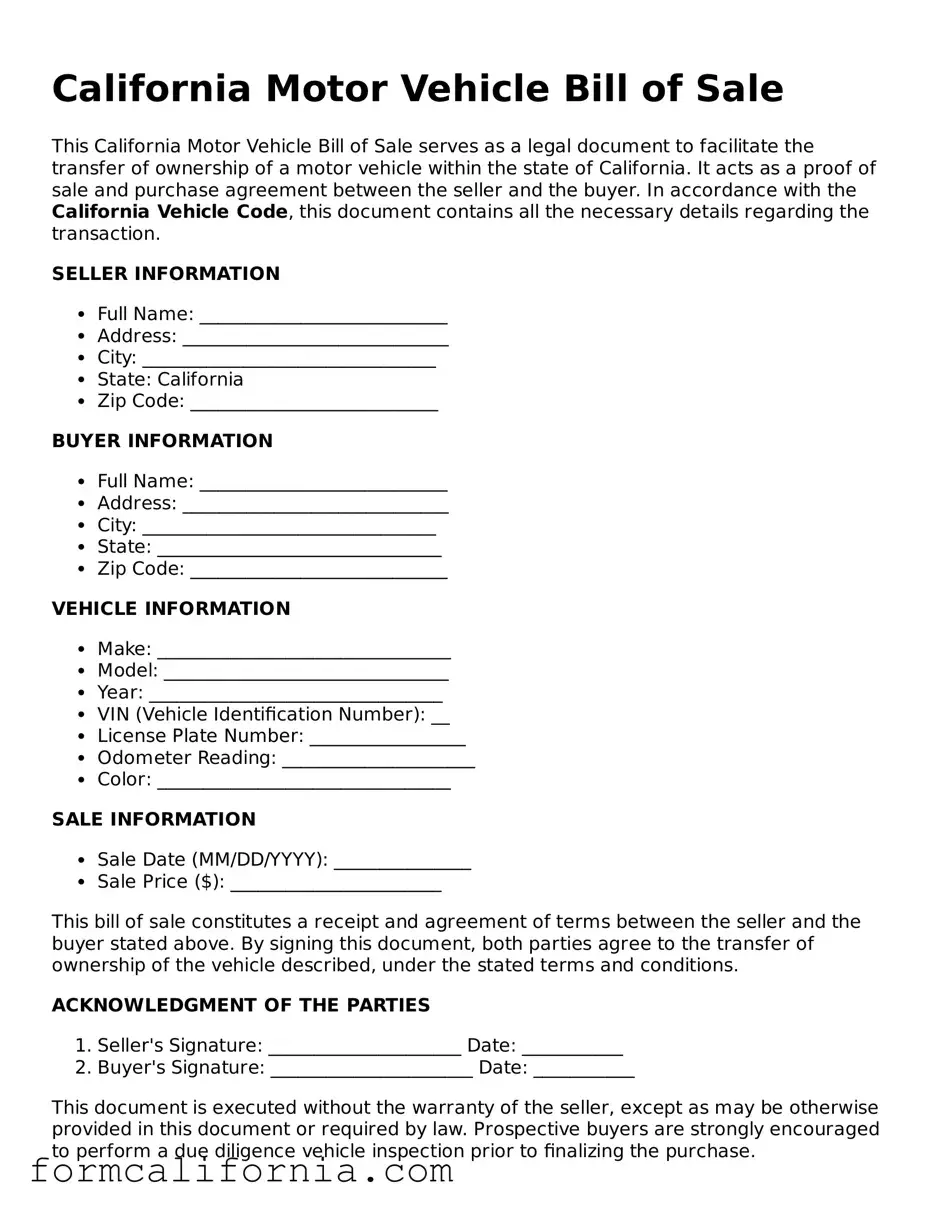Similar to the California Motor Vehicle Bill of Sale, the General Bill of Sale is a document that records the transfer of ownership of personal property from one person to another. Although it's more encompassing, covering items beyond vehicles such as furniture or electronics, the core function remains the same: to provide a legal record of a sale. This ensures both parties have evidence of the transaction, detailing the item sold, sale date, and parties involved, thus offering legal protection and clarity.
The Warranty Deed is another document that operates in the sphere of transferring ownership, though it is specific to real estate rather than personal property like a car. Despite this difference, the principle behind a Warranty Deed and the California Motor Vehicle Bill of Sale is similar; both serve to legally document the change in ownership. A Warranty Deed, moreover, guarantees that the seller holds clear title to the property, offering the buyer protection that is somewhat echoed in the vehicle bill of sale through the provision of details like the vehicle's condition and any warranties in place.
A Quitclaim Deed, while also related to the transfer of property, contrasts with the two previously mentioned documents by not guaranteeing that the seller has a valid title. Even so, its similarity to the California Motor Vehicle Bill of Sale comes from its fundamental purpose: legally formalizing the transfer of an interest in property (real estate in the case of a Quitclaim Deed and personal property for the vehicle bill of sale). Both documents officially record the shift of ownership, which can be crucial for tax, liability, and dispute resolution purposes.
The Promissory Note mirrors the financial aspect of the California Motor Vehicle Bill of Sale. This document is a written promise to pay a specified sum of money to someone at a set time or on demand. While a Promissory Note usually pertains to a loan agreement rather than a sale, both documents outline terms agreed upon by the parties involved, such as payment amount and schedule. The critical connection is their function as binding agreements that confirm a financial understanding, offering a record that can help prevent disputes.
Lastly, the Receipt acts as a straightforward counterpart to the California Motor Vehicle Bill of Sale. The Receipt might be seen as a more simplified or informal version, documenting the basic details of a purchase: the item bought, the price, and the date of transaction. Like the vehicle bill of sale, a Receipt offers proof of purchase, which can be essential for returns, exchanges, or warranty claims. Both documents, then, serve as tangible records that a transaction occurred, safeguarding the rights of both buyer and seller.
